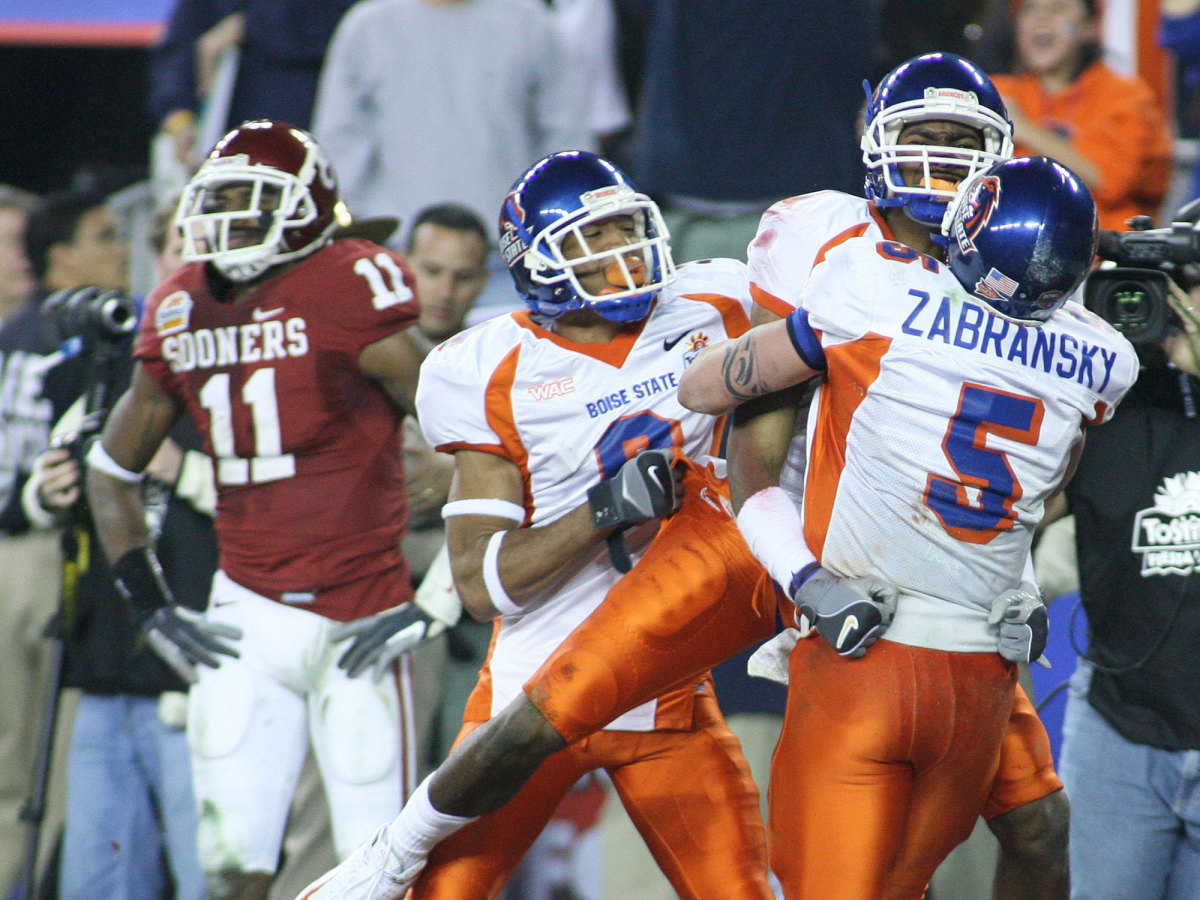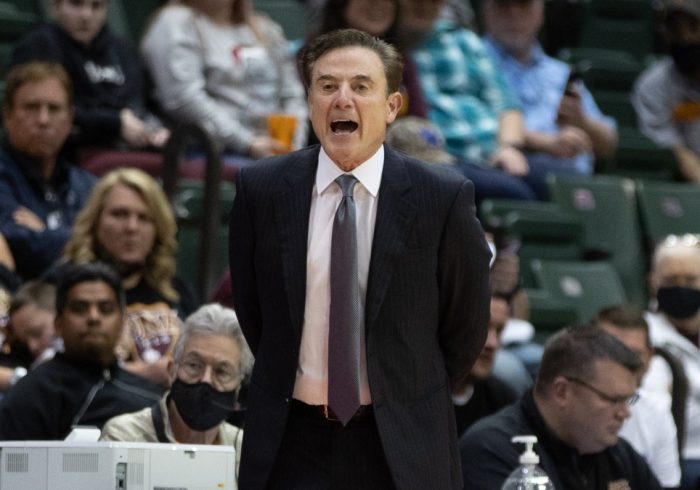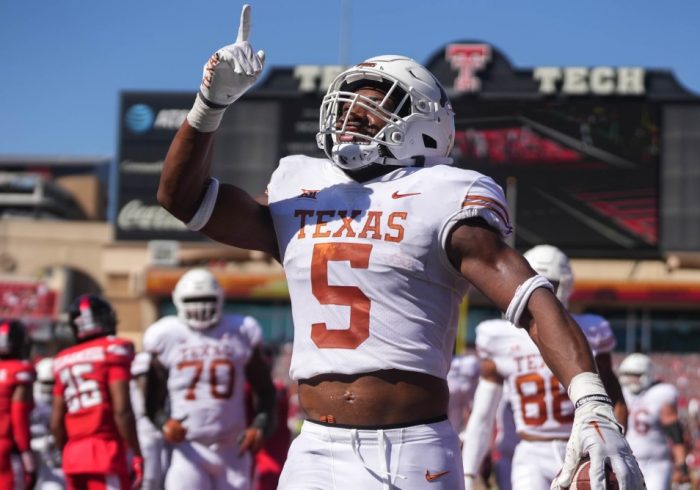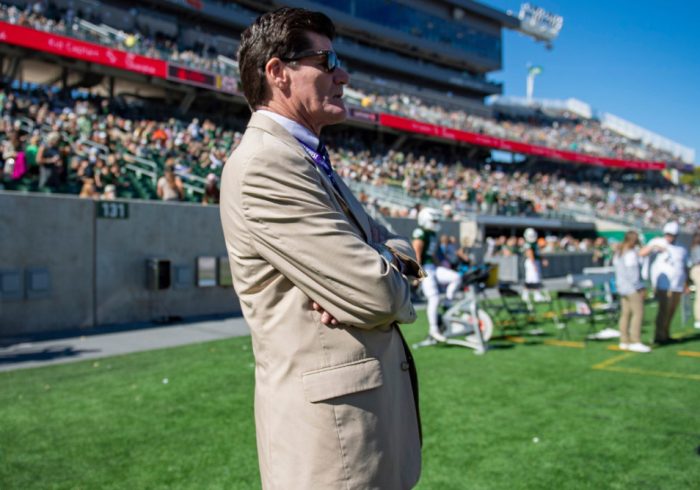The first college football bowl game was played on Jan. 1, 1902, and it was decidedly not a classic. Michigan beat Stanford 49–0 in the inaugural Rose Bowl. Among the lowlights: nine Stanford fumbles and its captain saying that his team was quitting with eight minutes remaining.
But in the nearly 121 years since then, football fans have enjoyed a multitude of exciting bowl games. The boss tasked me with picking the best of them, which is like picking the nation’s best pizza. To make the job more manageable, I split some hairs and created some subdivisions and made the following list:
The best of each of the New Year’s Six bowl games—the Cotton, Fiesta, Orange, Peach, Rose and Sugar. (Playoff games not included, check back for more on that later.)
Cotton Bowl
Jan. 1, 1979. Notre Dame 35, Houston 34. The Joe Montana chicken soup game.
This game was a wild pileup of bad weather and big moments, contested in the aftermath of an ice storm in 20-degree weather with a howling wind. The Fighting Irish won despite committing seven turnovers, which seems impossible. Blocking two punts in the fourth quarter helped, and so did the last of a string of miracle comebacks in a Notre Dame uniform by Montana—who would then go on to do the same sort of things in the NFL.
With the Irish trailing 20–12 at halftime, the team training staff kept a flu-ridden Montana in the locker room. His body temperature had dropped to 96 degrees. After feeding him chicken soup to get his temperature back to near-normal, Montana returned late in the third quarter. By the fourth, Houston led 34–12. That remained the score midway through the final quarter.
The wind was such a massive factor that 62 of the game’s 69 points were tallied with it at the scoring team’s back. Notre Dame had the wind last, and it had Montana.
The second Irish blocked punt was returned for a touchdown, and Montana threw a two-point conversion pass to make it 34–20. After a short Houston punt on the next series, Montana again drove the Irish to score and again converted a two-pointer. But another Notre Dame drive ended with a Montana fumble with a little more than two minutes remaining, and that appeared to end it.
That’s when Houston coach Bill Yeoman made a decision that was heavily second-guessed. On a fourth-and-1 at his own 29-yard line, he went for it rather than risk another punt block. The Cougars didn’t make it, and Montana had one last chance with 35 seconds on the clock.
An 11-yard scramble, a 10-yard pass, an incompletion—and then Montana called the final play himself. He rolled right and found Kris Haines in the corner of the end zone for the tying touchdown. Kicker Joe Unis ended it with the extra point.
Fiesta Bowl
Jan. 1, 2007. Boise State 43, Oklahoma 42. The trick-play trinity.
The very premise was far-fetched: Boise State, just 11 seasons into FBS membership, going to its first New Year’s Day bowl game and beating lordly Oklahoma? But it wasn’t just an historic upset; it was how the upset came to be.
For 58 minutes and 58 seconds, the underdog Broncos did not trail—and at one point in the third quarter, they led by 18 points. Armed with Chris Petersen’s gameplan, Boise exploited Oklahoma’s defense and bottled up Sooners superstar Adrian Peterson. But eventually, the physically superior team exerted itself and tied the game at 28 with 1:14 left to play.
With what appeared to be a final chance to drive for the win, disaster struck—quarterback Jared Zabransky served up a pick-six that instead handed the lead to Oklahoma for the first time.
In final-minute desperation mode, Zabransky hit one big throw to get into Sooners territory—but then took a sack back to midfield with 30 seconds left. After consecutive incompletions, Boise was staring at a 4th-and-18 with 18 seconds left, needing a miracle.
What followed was the gutsiest three-call sequence in college football history.
First: To get the game into overtime, Boise dialed up a hook-and-lateral call. Zabransky fired a pass for 15 yards to Drisan James, who then lateraled to Jerard Rabb for a 35-yard sprint down the sideline to tie the game.
A hook-and-lateral call enabled Rabb to tie the game in the waning seconds of regulation.
Rick Scuteri/USA TODAY Sports
Second: After Peterson charged unimpeded to score the go-ahead TD for the Sooners on the first play of OT, Boise converted two third downs before facing a fourth-and-2 at the Oklahoma 6. The call was a halfback pass, rolling out Vinny Perretta for a lob to tight end Derek Schouman for the touchdown. It was the first pass of Perretta’s college career.
Third: Boise opted to go for two and end the game, win or lose. The Broncos dusted off one of the oldest trick plays in football, the Statue of Liberty, with Zabransky faking a throw with his right arm and sticking the ball behind his back with his left for running back Ian Johnson to take on a handoff.
Johnson scooted around left end for the winning points and then added his own layer to the fairy-tale moment, dropping to one knee just outside the end zone and proposing to his cheerleader girlfriend on the spot.
Orange Bowl
Jan. 2, 1984. Miami 31, Nebraska 30. The U arrives, and the state of Florida assumes command.
For much of the 1983 season, the discussion was whether Nebraska had fielded the best team in college football history. The Cornhuskers had a megawatt backfield, with quarterback Turner Gill, wingback Irving Fryar and Heisman Trophy-winning running back Mike Rozier. They had a punishing offensive line. They had a defense that seemed plenty good enough to hold up its end of the bargain.
Nebraska opened the year by beating then No. 4 Penn State 44–6, hung 84 points on Minnesota on the road, put 63 on Syracuse and demolished UCLA. Big Eight play was more of the same: 69 points against Colorado, 72 against Iowa State, 67 against Kansas. Rival Oklahoma gave the Cornhuskers a game, 28–21, but they rolled unimpeded into the Orange Bowl against double-digit underdog Miami.
Nebraska walked into a South Florida trap. Armed with superior speed and a Howard Schnellenberger passing attack executed superbly by quarterback Bernie Kosar, Miami jumped to a shocking 17–0 lead in the first quarter. The Huskers suddenly went from invincible to outdated.
With Nebraska desperate for a way to get back into the game, its first touchdown was on a fumblerooski run by offensive guard Dean Steinkuhler. The Huskers followed with 10 more points to tie the game at 17, but Miami quickly gained distance once again with two long touchdown drives to take a 31–17 lead into the fourth quarter.
Nebraska rallied again, scoring two touchdowns in the fourth to make it 31–30 with 48 seconds to play. Huskers coach Tom Osborne had a choice: kick the extra point and take a tie in an era before overtime, which likely would have kept Nebraska No. 1 in the polls, or play for the win and leave no doubt as to who was national champion.
He played to win, but didn’t. Miami safety Kenny Calhoun got a hand on a two-point pass from Gill to Jeff Smith, deflecting it and sealing the upset.
“We wanted an undefeated season,” Osborne said. “We wanted the national championship. But I don’t think our players or anybody would have been satisfied if we backed into it by kicking a PAT. I don’t think that’s the way to do it.”
Schnellenberger agreed: “I think Tom Osborne grew a lot in stature in the view of everybody. That’s what football is all about—trying to win the game.”
Miami vaulted up from No. 4 to No. 1 in the final poll, with the help of Georgia upsetting No. 2 Texas in the Cotton Bowl earlier in the day. “How ’bout them Dawgs?” Schnellenberger crowed afterward.
Thus began the Miami dynasty that changed the geography of the sport. The Canes reeled off national championships in 1987, ’89, ’91 and 2001—five titles earned by four coaches. The rest of the Sunshine State rose alongside them, with Florida and Florida State winning three titles apiece between 1993 and 2013.
Peach Bowl
Dec. 31, 2012. Clemson 25, LSU 24. The rise of Dabo, the decline of The Hat.
The situation: Clemson faced a fourth-and-16 at its own 14-yard line, with 1:22 left, trailing LSU 24–22. There aren’t many good options on fourth-and-16, but Tigers tight end Brandon Ford suggested one to coordinator Chad Morris.
“Run ‘Switch,’” Ford advised. Morris obliged. Quarterback Tajh Boyd dropped, evaded the rush, read the defense and delivered. DeAndre Hopkins slid under the ball for the catch. First down, Clemson.
Boyd completed four more passes, LSU was flagged once for pass interference and the Tigers sent kicker Chandler Catanzaro out for a 37-yard field goal on the final play. Not long before the clock struck midnight on New Year’s Eve, Catanzaro made the kick—ushering in a new year and a new era at Clemson, and ushering out much of Les Miles’s popularity at LSU.
If you ask Clemson fans, that was the night “Clemsoning”—the act of flopping on the big stage—died. It was the night fourth-year coach Dabo Swinney arrived as a major player.
“You can’t win a national championship until you learn how to win games like this,” Swinney said after the game, prophetically. Three years later, his program would play for a national championship. Four years later, it would win one. Six years later, it would win a second.
Miles, meanwhile, saw his window at the top of his profession start to close. He’d won one national title at LSU, in 2007, and played for a second in ’11. Earlier in the ’12 season, Alabama had rallied to beat the Tigers in Baton Rouge, on its way to a second straight national championship while LSU was out of the mix. Three years later, Miles barely survived an attempt to fire him, but it was a temporary reprieve; early in the ’16 season he was dismissed.
At that Peach Bowl in Atlanta, leading 24–12 in the fourth quarter, Miles’s offense completely stalled in the fourth quarter to give Clemson a window for its comeback. Swinney’s team took advantage, and the coaches essentially switched roles—national champions and worthy adversaries of Nick Saban—that night.
The 2006 Rose Bowl is considered by many to be one of the greatest college football games ever.
Robert Beck/Sports Illustrated
Rose Bowl
Jan. 4, 2006. Texas 41, USC 38. Vince Young forever.
Texas quarterback Vince Young was angry 25 days earlier, simmering at the Heisman Trophy ceremony as he heard Reggie Bush’s name called as the winner of the award. Young had finished second. He believed he was the deserving winner.
In the iconic Rose Bowl setting, his Longhorns trailing Bush’s Trojans 38–26 with 6:42 remaining, Young got his revenge. He had his own Heisman moment and won a national title in the process.
Over the course of the next 18 Texas offensive plays, Young accounted for all 123 Longhorns yards and 14 of their 15 points in a comeback for the ages. He threw for 80 yards. He ran for 43. He scored two TDs and added one two-point conversion run. For the game he had 267 passing yards and 200 rushing.
On a star-studded night and in a game of dramatic swings, Young shone brightest and authored the final turn of events. He left the USC defense gasping and grasping as it tried to contain him.
“He was off the charts,” USC coach Pete Carroll said of Young.
Young got his chance to save the season only when the Texas defense made a fourth-and-2 stop at its own 42-yard line with 2:13 left to play. Trojans fans still lament the hesitant cutback bruising back LenDale White made on the play, instead of plowing forward. They wonder what would have happened if Bush had been in the game and had gotten the call. And they’ll never forget the sight of Young shredding their defense on the winning drive.
On Texas’s final possession, from the USC eight-yard-line with 26 seconds left, announcer Keith Jackson set the stage: “fourth-and-5, the national championship on the line right here.” Young dropped back, and USC blitzed two linebackers, sending six people crashing the pocket, but Young had an escape route to his right. He did what everyone figured he would do on the play—use his legs and head for the pylon.
“Going for the cornerrrrr,” Jackson called, voice rising. “He’s got it!” Then Young ran for the two-point conversion to put an exclamation point on it. Texas had its first national championship since 1969.
Sugar Bowl
Dec. 31, 1973. Notre Dame 24, Alabama 23. Robin Weber? Robin Weber.
The play that would decide an epic, blueblood clash for the national championship could have been made by any number of current college and future NFL stars on either roster. But in a game that had six lead changes and several jaw-dropping swings of momentum, Notre Dame coach Ara Parseghian put the season on the shoulders of a backup tight end who not only had never caught a college pass, he’d never even run a pass pattern in a college game.
Actually, it’s more improbable than that. Robin Weber, recipient of the most famous pass Notre Dame’s very famous football history, said in 2007 that he’d never even caught one from quarterback Tom Clements in practice or pregame warmups.
Weber was Notre Dame’s other tight end, in the shadow of All-American Dave Casper and only occasionally playing in double-tight formations as a blocker. He was in the game against Alabama due to the difficult circumstances the Irish faced: third-and-five at their own six-yard line, with just more than two minutes to play, Notre Dame clinging to a one-point lead.
They ended up in that spot due to a gamble by Crimson Tide coach Bear Bryant that appeared to be on the verge of working out perfectly. Bama had punted, and Greg Gantt hit a monster that was downed at the Irish 1-yard line—but Notre Dame had roughed the punter on the play. That was not an automatic first down at the time, so the Tide could have had fourth-and-5 near midfield or leave the Irish backed up on their own 1, figuring they would get the ball back with enough time and better field position.
The gamble looked even better when Casper jumped offside on that third-and-5 play, pushing the Irish half the distance to the goal and making it third-and-8. Weber expected to be taken out for split end Pete Demmerle, but he remained in the game and the call came in—Notre Dame would throw, from a full-house backfield, with the two tight ends the only targets in the pattern.
Clements executed a fake trap play to the left and dropped back deep into his own end zone. He looked briefly toward Casper on the right, who was covered, then looked to Weber as an Alabama pass rusher closed in. Clements let it fly deep down the left sideline, and Weber hauled it in over his shoulder for a 34-yard gain.
The Irish ran the clock out from there. Robin Weber’s first and only catch of 1973 won the national title for Notre Dame.



